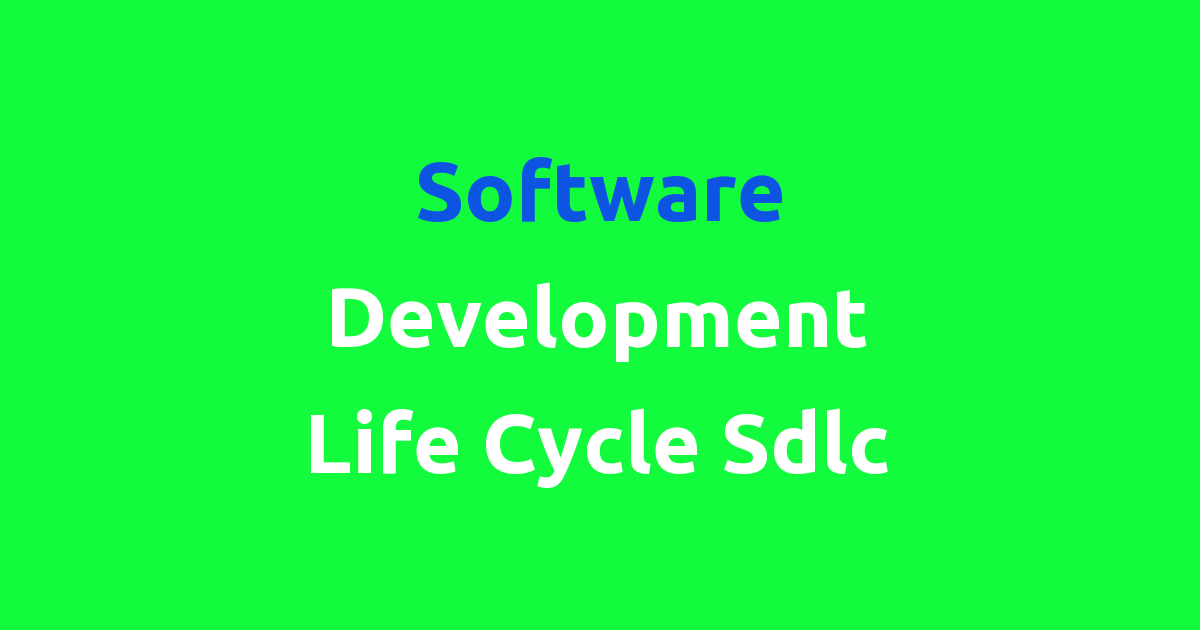The software development life cycle is commonly known as SDLC.
Software Development Life Cycle (SDLC)
Introduction
Software Development Life Cycle (SDLC) is a systematic process for building software applications. It consists of a series of steps or phases that provide structure to the development process. SDLC is essential for ensuring that software projects are completed on time, within budget, and meet the requirements of stakeholders.
Problem Statement
The traditional software development process is often time-consuming and costly. It involves multiple phases, including requirements gathering, design, development, testing, and deployment. This process can lead to inefficiencies, delays, and cost overruns.
Existing System
In the existing system, software development follows a linear approach, where each phase is completed sequentially before moving on to the next phase. This can lead to issues such as scope creep, where requirements change after development has already begun, leading to delays and cost overruns.
Disadvantages
The traditional software development process has several disadvantages, including:
1. Lengthy development cycles: The sequential nature of the process can lead to lengthy development cycles, resulting in delays in delivering the final product to stakeholders.
2. Lack of flexibility: The linear approach makes it challenging to adapt to changing requirements or technology trends, leading to outdated or ineffective software solutions.
3. Cost overruns: Delays in the development process can result in increased costs, as resources are allocated for a longer period than initially planned.
4. Inefficient resource utilization: The traditional approach may not utilize resources effectively, leading to underutilization or overutilization of resources.
Proposed System
To address the limitations of the existing system, a more iterative and flexible approach to software development is proposed. This approach involves breaking down the development process into smaller, more manageable chunks, allowing for quicker feedback and adaptation to changing requirements.
Advantages
The proposed system offers several advantages over the traditional software development process, including:
1. Improved flexibility: The iterative approach allows for greater flexibility in responding to changing requirements or technology trends, ensuring that the final product meets stakeholder expectations.
2. Faster development cycles: By breaking down the development process into smaller chunks, development cycles can be accelerated, leading to shorter time-to-market for software applications.
3. Cost-effective: The iterative approach allows for early identification of issues, reducing the likelihood of cost overruns and ensuring that resources are allocated efficiently.
4. Enhanced collaboration: The iterative approach promotes collaboration between stakeholders, developers, and testers, leading to a more cohesive and effective development process.
Features
The proposed system includes the following key features:
1. Iterative development: The development process is broken down into smaller iterations, each focused on delivering a specific set of features or functionality.
2. Continuous feedback: Stakeholders are involved throughout the development process, providing feedback on each iteration to guide future development efforts.
3. Adaptive planning: The development plan is continuously updated based on feedback and changing requirements, ensuring that the final product meets stakeholder expectations.
4. Automated testing: Testing is integrated into each iteration, allowing for early identification of issues and ensuring that the final product is of high quality.
Conclusion
In conclusion, the traditional software development process has several limitations, including lengthy development cycles, lack of flexibility, cost overruns, and inefficient resource utilization. By adopting a more iterative and flexible approach to software development, these limitations can be addressed, leading to faster development cycles, improved flexibility, cost-effectiveness, and enhanced collaboration. The proposed system offers several advantages over the traditional software development process and includes key features such as iterative development, continuous feedback, adaptive planning, and automated testing. Overall, the proposed system offers a more effective and efficient approach to software development, ensuring that software projects are completed on time, within budget, and meet the requirements of stakeholders.

